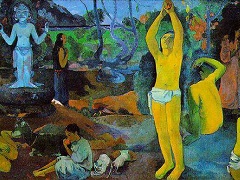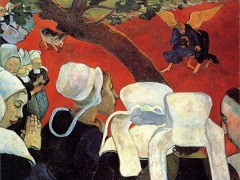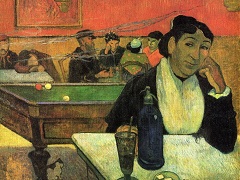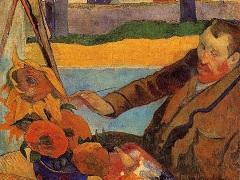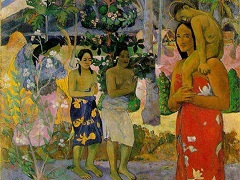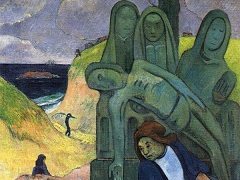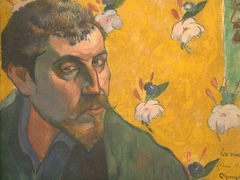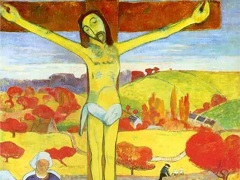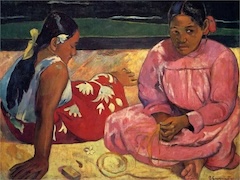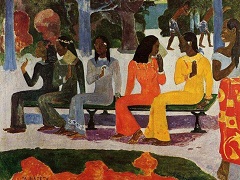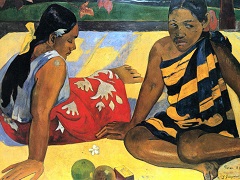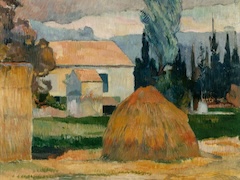The White Horse, 1898 by Paul Gauguin
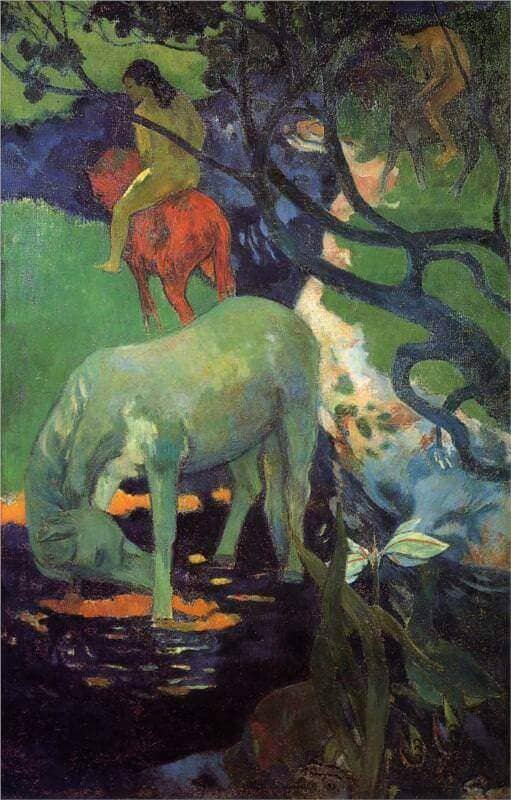
Here is a composition that rises with a continuous flow of curves from bottom to top, an arrangement without a horizon, in which space is suggested rather than rendered. Horizontal and vertical planes (the pool and plants of the foreground, and the road and twining branches of the background) flow into each other, all painted in a perspective that views the scene at once from in front and from above. This, and the twisting, curving pattern of the horses backs, the leaf forms, and the climbing vine trunks hark back to the Japanese print. The flat pattern and raised perspective of the Japanese woodcut had been major sources of Gauguin's style in Brittany, but in Tahiti their influence had diminished. Here Gauguin seems to recall that style, but he has softened and varied it. Horses and riders are more modeled than the rest, (although they go up as they go back, as in oriental art), and there is an almost Impressionist variation of light and texture within the areas of pool and field.
Most naturalist of all, the "white" horse (whose movement seems like the symbolic gesture of a pawing Pegasus out of Redon's imaginative art), is painted grayish-green because the light upon it has been filtered through the leaves above. Isolated and riderless, self-contained in an otherwise active composition, its mystery and strangeness spreads, and suffuses the whole painting.

